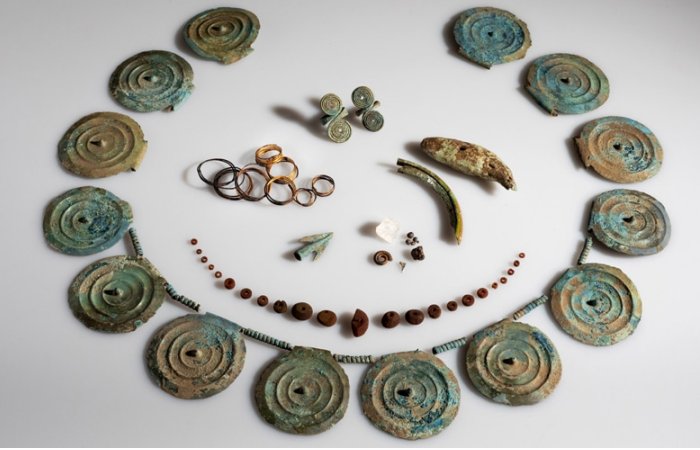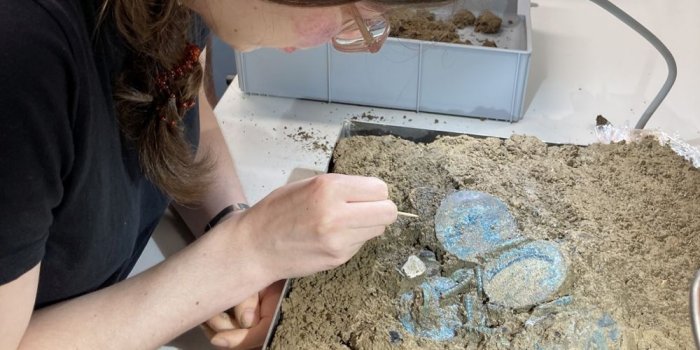Conny Waters – AncientPages.com – A magnificent Bronze Age treasure has been discovered in Switzerland. The adventure started when Franz Zahn examined a freshly harvested carrot field in Güttingen with his metal detector. When he found several Middle Bronze Age decorative discs, he immediately contacted the Office of Archaeology, which arranged the excavation and documentation of the artifacts.

Several remarkable Bronze Age artifacts were found in the field. Credit: Cantonal of Thurgau
Ancient Treasures Hidden In A Carrot Field
Franz Zahn has been working with his metal detectors for many years. During this time, he has unearthed several beautiful objects from the Iron and Bronze Ages, but this find is without something exceptional. He immediately recognized that these belonged to an accumulation of other finds. Could the artifact be grave goods?
With the farmer’s permission, archaeologists and volunteers excavated the area. Still, they could not find graves, and scientists suspect the jewelry must have been buried on-site in an organic container or sack. A similar find had been discovered near Etzwilen two years ago, and researchers were hopeful there could be a connection between these two.
A piece of the soil and the unearthed objects were transported to a laboratory in Frauenfeld for close examination.
Other discs revealed a variety of small bronze spirals, jewelry items such as finger rings, and dozens of tiny amber beads. These beads, the size of pinheads, had to be removed individually with tweezers. Some wire spirals shone gold. An analysis brought certainty: it is actually gold.

The recovery of the artifacts. Credit: Cantonal of Thurgau
Finds such as a bronze arrowhead, a beaver tooth, a perforated bear tooth, a rock crystal, a fossilized shark tooth, a small ammonite, and several lumps of polish ore were surprising. The scientists informed in a press release that the natural occurrence of these iron ore globules and ammonite is probably in the Schaffhausen area.
A Rich Woman With A Pᴀssion For Collecting
A total of 14 spiked discs were recovered. These are bronze discs with three ribs and a round thorn – or spike – in the middle. On one side, there was a narrow grommet through which a thread or leather strap could be pulled through. These are typical “costume jewelry” from the Bronze Age, more precisely, the Middle Bronze Age around 1500 B.C.

Exposure in the laboratory. Credit: Cantonal of Thurgau
As finds from graves show, women wore necklaces with these eye-catching discs, with spirals strung between them as spacers. Eleven of these spirals were found in Güttingen.
In addition, eight slightly larger spirals made of fine gold wire appeared, weighing over 21 grams. More than 100 amber beads and two finger rings with double spirals complete the ensemble.
See also: More Archaeology News
Was there a jewelry box hidden here? Were the bear tooth, the rock crystal, and the selected fossils and stones a collection of curiosities or souvenirs from a visit to Klettgau? Or is there even more to it? Objects of this type may have been considered to have a unique, protective, or healing effect and may have been worn as a kind of amulet.
Future Museum Pieces
The Bronze Age objects are being restored so they can be exhibited in the Museum of Archeology in Frauenfeld next year. In addition, scientific analyses and careful documentation are planned.
Written by Conny Waters – AncientPages.com Staff Writer





